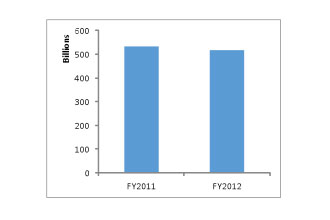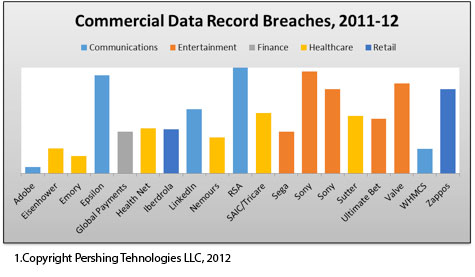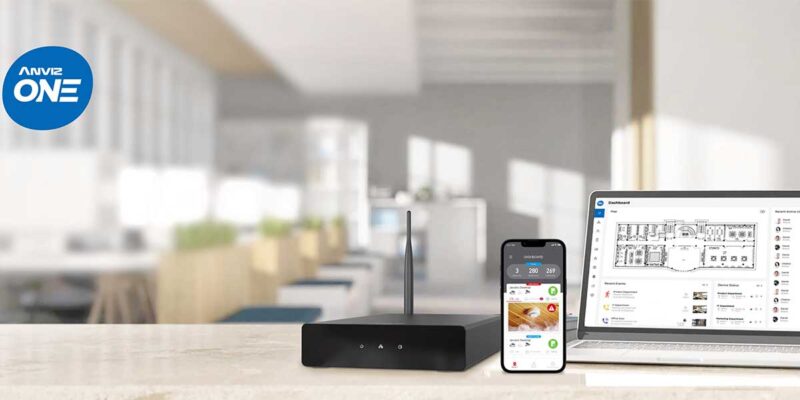What is Government A/V, and Why Should I Care?
My favorite wrestler — and yes, that means I like more than one — is John Cena. The man is a fabulous athlete and ferociously intelligent, but I mostly like him simply for his signature move — the You Can’t See Me. It’s hilarious — he pretends to hide behind his hand, which is waving in front of his face, despite the fact that hand and face are attached to 6’4″ and 300 pounds of granite linebacker.
You see, I can relate to that. I’m one of the (formerly) anonymous members of a small but proud fraternity within the A/V industry, which the rest of the industry barely knows or cares exists. I’ve been in A/V for a couple winters shy of 20 years now, and for roughly the last decade of that, I’ve been supporting the government A/V sector and its kissing cousin, secure A/V.
Every time I meet up with A/V friends, they all ask me: “What is government A/V?” And here’s the thing… that’s a really, really hard question to answer. I have to give a different answer each time, because it’s so difficult to condense into an elevator speech. So when Gary Kayye graciously offered me the opportunity to try to explain this strange and regimented world in which we few, we happy few, we band of brothers operate, I jumped at the chance.
At its very simplest level, of course, government A/V is simply about selling audiovisual goods and services to the federal, state and local government markets. But if that were all there was, odds are, a lot more of you would be doing it, and I probably wouldn’t be writing this column.
While the approach of Supreme Court Justice Potter Stewart is undoubtedly the most common method to encapsulate all that is, and isn’t, government A/V, I think the more effective way is to contrast government A/V with commercial A/V. With that in mind, I will endeavor over the next few months to help clarify where commercial A/V and government A/V converge and diverge, and where you, the A/V service provider, can best apply your talents in our field.
When I evangelize government A/V to A/V people who live almost entirely outside the government sphere, I invariably get two questions, almost back-to-back: “Where the heck do you start?” and “Why should I care?” We’ll come back to the first question in a future column or three, but for the second question, I have one very basic answer: Revenue. Money. Benjamins. Mad Cheddar.
In 2011, Systems Contractor News had a new company in its Top 50 (I know, I know, you never read The List, except you totally do) that most of you had probably never heard of.* Proving it was no fluke, MicroTech was back at number 2 in 2012, with a reported $315 million in A/V revenue (full disclosure, I used to be employed by MT). In the parlance of the government contracting world, MicroTech is a small-to-medium sized business. But in the A/V world, it’s HUGE. And it came seemingly out of nowhere, simply by making a few strategic acquisitions and winning some key contracts, all within a very short timeframe.

 Let’s look at more data. According to the General Services Administration (GSA), the top 10 government contractors in Fiscal Year (FY) 2012 accounted for roughly $136 billion (that’s a Thousand Million for our friends across the pond) in revenue. Although not all of them are A/V companies (Huntington Ingalls builds ships, for instance), most of them do sell A/V services and hardware. If even 0.5 percent of their business goes to A/V in some way (not an unreasonable assumption, by the way), you’re looking at over $500M in government A/V contracts last year to those 10 companies alone. And the dirty little secret is, the vast majority of that work is subcontracted out. Guess where you come in?
Let’s look at more data. According to the General Services Administration (GSA), the top 10 government contractors in Fiscal Year (FY) 2012 accounted for roughly $136 billion (that’s a Thousand Million for our friends across the pond) in revenue. Although not all of them are A/V companies (Huntington Ingalls builds ships, for instance), most of them do sell A/V services and hardware. If even 0.5 percent of their business goes to A/V in some way (not an unreasonable assumption, by the way), you’re looking at over $500M in government A/V contracts last year to those 10 companies alone. And the dirty little secret is, the vast majority of that work is subcontracted out. Guess where you come in?
That’s one of the primary differences between government A/V and commercial A/V: SCALE. Government A/V is simply bigger. The players are bigger, the contracts are bigger, the process is longer (and vastly more complicated), the projects are larger… you get the point. Sure, there are some vendors out there who will swear they sell to government, and that it’s only a few thousand bucks worth every year. Not saying that isn’t the case. What I am saying is: That’s a rounding error in the grand scheme of things.
If you really want to get a sense of the government A/V market, think about this… the United States government spends roughly $4 trillion every year. THAT IS ONE CUSTOMER. If you captured only .0000000025 percent of that business per year, you’d be a $100m company. And that’s just the U.S. federal government. There are 206 federal governments worldwide. And literally thousands of state and local government entities in this country alone.
Some of you are probably murmuring, “Well, that’s great if we’re talking about the previous decade, but this is the ‘Tweens (copyright JB 2013), and federal spending is – thankfully – falling dramatically as we get our fiscal house in order.” Well, yes, it’s true that federal contracting spending fell last year by the largest annual drop in 16 years. For those of you who didn’t click through, that massive, jaw-dropping slash in federal spending? Yeah, that was 3.1 percent.
All kidding aside, federal revenue is probably going to plateau for at least a couple years. I’m not trying to tell you that federal government spending is the Rocket to Mars that it used to be. We could argue about state/local money, or international government revenue, or the fact that the federal government is a much more reliable payer than any other organization, but that’s forum fodder. So instead, I’ll give you another Dirty Little Secret for getting into government A/V: If you’re good at it, you’re almost by default good at pretty much every other aspect of A/V. And you’ll probably dominate your competition.
For one thing, you have to be extremely well organized. You have to have a rock-solid administrative practice and exceptional contracting talent. Your business development learning curve is going to be extremely steep. Once you emerge on the other side, however, your organization will be much stronger, and you will have lots of nice, steady, predictable, creditable revenue from your federal customer with which you can go out and build some new practices.
Secondly, the government is extremely focused on security, way more than any other customer. (Note that this is not just the U.S. Department of Defense, although they’re obviously the Big Kahuna when it comes to secure A/V.)

That said, any cursory glance at recent history suggests that security is going to be a singularly key focus of IT systems generally, and A/V systems specifically, throughout the commercial world over the next decade. If you learn how to build government-style security into your systems, I guarantee you that your commercial business will grow as a result.
But more on that later. ☺
*The SCN Top 50 is the Princeton Review of our industry. Every year, exactly 50 of our colleagues read it religiously and tout its unparalleled scope and objectivity, and roughly 99,950 of our colleagues read it religiously and scream about its methodology and focus on revenues. It’s the closest thing we have to a barometer in our industry. Send me all the letters you want, but until there’s another metric, it’s what we have to work with.





